
|
 |

|
 |
Freezing Performance - Art of Avinash Pasricha - Dr. Navina Jafa e-mail: navina.jafa@gmail.com Photos courtesy: Avinash Pasricha July 4, 2019 Performing Arts photography in India has assumed a place of its own. The image in a photograph and its interpretation assumes an independent life. This article is a critique of the art of the well-known artist Avinash Pasricha based on a few selected photographs on dance and music. Among other arts, the performing arts are most temporal - the moment you perform or nuance is born, that very moment it dies. Intriguing is the manner that the performance acquires a new life in another art form - photography. Pasricha's large number of images of dance and music as 'performed' comprise of a large number of Indian dancers and musicians. His body of work spans several decades. 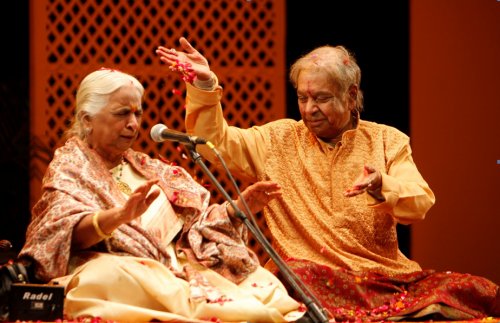 When Krishna adores Radha & Radha adores Krishna- Girija Devi & Pt Birju Maharaj As a dance student, one recalls his frequent visits to the old premise of the National School of Kathak Dance - Kathak Kendra, New Delhi in the 1980s. Along with his assistant Ashwini Chopra, the duo was often seen crossing the lawns towards a hall at the back carrying their equipment which included a white and black umbrella. Those were the days of reel film cameras, and it was also the period when Indian classical dance attained a new high as a seminal artist in the index of the first series of the Festivals of India. Cultural diplomacy was about presenting Indian culture to the world, its exotica as much as its deep civilizational complexity and sophistication. Dance photography of Avinash Pasricha took a central place in the curatorial display of the performing arts of India. Photographing Performing Arts: Photographing Indian dance is challenging. Unlike, the Western classical or modern dance, the photography needs to (a) arrest the individual body language of dance forms and dancers; and (b) the photographer aspires to capture both in Indian dance and music the sthai bhav (essential meaning) of the piece. The sthai bhav can be experienced in the performer's body language and facial expression. Dance photography combines intense focus, releasing shutters at the right moment and assessing light. It is about freezing action, defining aesthetics and displaying emotion. Arresting a moment in a performance of music and dance in an era of film cameras was exciting. Images, especially those from a live performance catch and freeze a temporal fleeting movement of a dynamic enchanting human face and body in time-space. Pasricha in an interview expressed, "I shot dance during a live performance, studio shoot or even as site-specific. Each has the special flavor that lends itself to the aura of the performed art, and the quality of which I try to capture in my camera. It was much more exciting as an artist to work with the reel camera than with the digital." As an artist, Pasricha preferred to shoot individuals where there is 'greater energy between two artistic genres and individuals.' 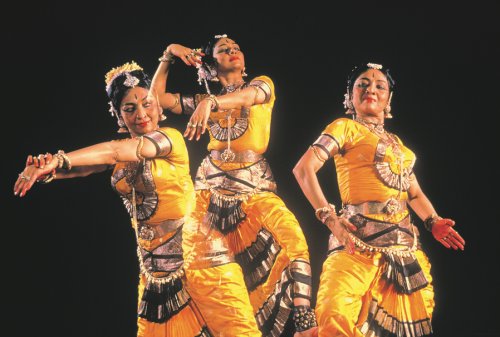 Yamini Krishnamurthy Recently, Avinash Pasricha exhibited a select few of his photographs at the Habitat Centre, New Delhi; of them, some preferred photographs illustrate the magic of his art. Without knowing the context of the performance, the photographs as artwork have an identity that remains separate from the actual performance context. 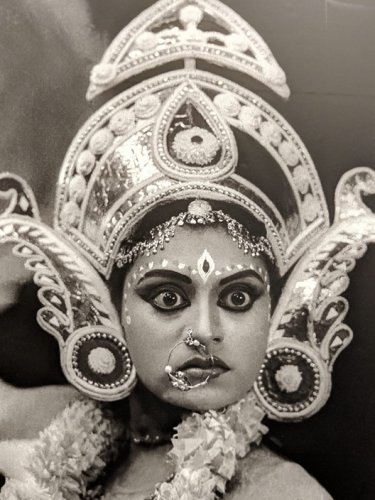 Swapnasundari 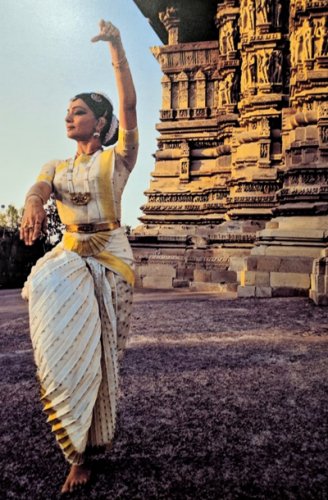 Malavika Sarukkai Photographing Group: 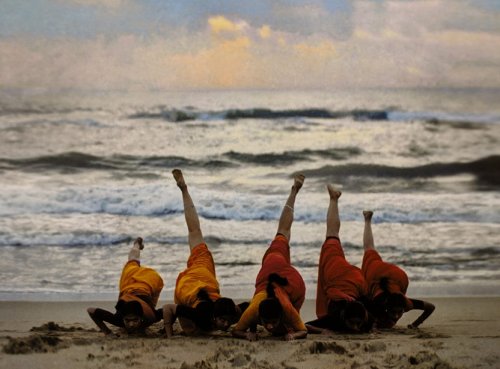 Chandralekha's group The Naad Brahm: 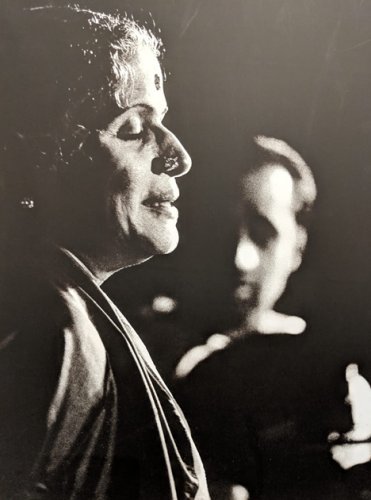 M.S. Subbulakshmi The intriguing part of this photograph is not merely the intense equilibrium and bliss in the face of the singer, but the blurred figure in the background. The figure appears as a remembered lived but temporal reality which is juxtaposed to the evolved state the artist finds herself in. She is transformed as a personified Naad Brahma - (Naad- the flow of sound - reality). The form of MS freezes the intangible process of channeled consciousness. The photograph captures the journey of the motion from within. The sound flows outwards, but she retreats inwards. Seeing the photograph - it seems, that there is no art - for art just began! Navina Jafa did her Phd on socio-economics, and aesthetics in the world of Kathak Dance in 6 urban towns of North India under Dr. Kapila Vatsyayan and urban historian Prof. Narayani Gupta. She learned Kathak from Gurus Pt. Birju Maharaj, Munna Shukla and Reba Vidyarthi. A Fulbright scholar at the Smithsonian Museum, she worked on cultural management and diplomacy. She runs a business on Academic Tourism and is vice president of Centre for New Perspectives presently working to create sustainable livelihoods for marginalized street-folk performers. Comments * Mr. Pasricha, India's well known versatile photographer's capability to shoot has nicely been projected in the article. - unknown (17 Jan 2020) Post your comments Please provide your name and email id when you use the Anonymous profile in the blog to post a comment. All appropriate comments posted with name & email id in the blog will also be featured in the site. |